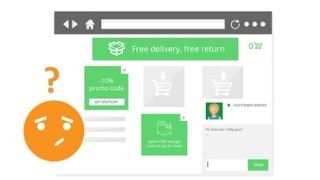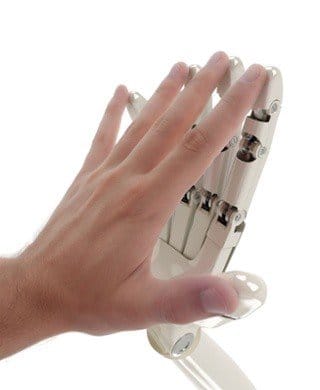Conversion Marketing Strategy: How To Get It Right?
Today’s conversion marketing strategy is based on creating actions and analyzing their results. Machine learning identifies, not guesses, various behavioral patterns within the on-site traffic and the right actions for converting them to customers.

While shopping online, everyone has been targeted with a wide variety of conversion marketing tactics. Conversion marketing means that the web store has been (partly) customised to fit each visitors estimated desires to increase conversion rate and average order value. Some of the classical examples of conversion marketing tactics are different kind of pop-ups (with or without discount codes), landing pages with contextual messages, and reminders from your personal shopping/browsing history.
Conversion marketing, as done today, sucks
Today’s conversion marketing strategy is based on creating actions and analysing their results. Those results, on the other hand, are achieved with time consuming and expensive guesswork.
The other day, I was shopping for a suitcase. Upon landing (from Google Ad) on a product listing of suitcase selection of Finnish high street retailer I was targeted simultaneously with -10% discount code and a proactive chat window. After a brief chat discussion, I had a recommendation for a potentially suitable suitcase. This suitcase now follows me around social media. If I end up buying it, the transaction has cost the retailer easily dozens of euros (combined value of Google Ad, discount code, chat discussion, and finally the retargeting ads).
Also, setting up this conversion marketing setup involves a considerable amount of manual work. The targeting can be based for example on demographics, traffic source, third-party data, and/or shoppers personal preference. In our example, 10% coupon is probably targeted for first-time visitors arriving from Google. And same applies to the chat. In the worst case, these actions are created by different persons without knowledge of each others.
Computer knows the best
The answer to these challenges is a combination of machine learning and behavioral analytics. Instead of using employees time to do the time consuming segmentation and rule creation this whole process can be automated. And kept up to date in real-time. Employees task is simply to set the guidelines for the machine learning’s play field.
Machine learning identifies, not guesses, various behavioral patterns within the on-site traffic and the right actions for converting them to customers. In the earlier example, this would mean that after analysing into which behavioral group I belonged it would have triggered either the discount code, chat or some other action from retailers toolkit.
This benefits retailer in following ways
- Higher conversion rate and more visitors buy on first visit (no retargeting costs)
- Less cost for converting customers (no actions or just chat or discount code, not both). [Read more]
- Employees don’t need to spend their time guessing how to target promotions.
Conversion marketing done right
So, instead of bombarding the visitor with everything you’ve got, the basis of your conversion marketing strategy should be innovating different actions you can give to non-converting visitors. Planning the sequence of these actions can, and should, be left for algorithms to decide. The algorithms select the right action for the right visitor. And if that action doesn’t work, they select the next one. You end up saving money on the margins and converting more visitors into customers.
— -
Note: This blog has been published April 6 2016 in giosg.com blog. See the original here.




